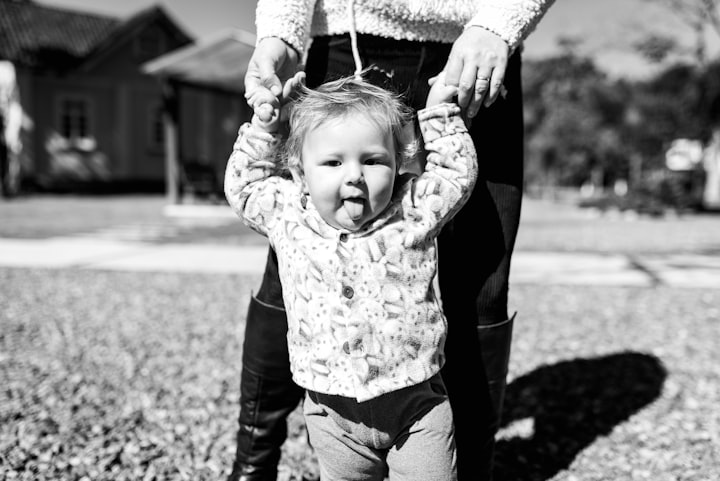Hidden Jewels
treasure hunts to explore creative living

Elizabeth Gilbert believes one of the oldest (and "most generous") tricks the universe plays on us is this: It buries strange jewels deep within us all, and then stands back to see if we can find them.
"The hunt to uncover those jewels -- that's creative living. The courage to go on that hunt in the first place -- that's what separates a mundane existence from a more enchanted one. The often surprising results of that hunt -- that's what I call Big Magic."
These hidden jewels within us could take days to find ... or months ... or years! That's the beauty of living a creative lifestyle, on YOUR terms; you can determine when and how you begin to seek out these jewels. Some may appear through active hunting, while others may require a keen eye as the universe leaves clues (coincidences). And I believe these jewels will come in all shapes, sizes, and colours (in other words: they will appear as new ideas for projects, new beliefs around creativity, new creativity routines, urges to try new creative outlets, and so much more).
I love the concept of hunting for treasure (I low-key enjoy anything related to pirates!), and I had a thought: "Why not come up with a creativity treasure hunt?" -- for myself, and for anyone else who wants to enhance their creativity, no matter what point you're at in your journey. Respecting the fact that everyone learns differently, and what works for one creative individual won't necessarily work for another, I've come up with three unique ways to explore creativity and design a creative lifestyle.
Create a Timeline of Your Creativity Journey
When I was in university, I took an art class as part of my degree requirements. The first assignment we had was to create a personal timeline of our life -- from birth to present, including all significant events in between (anything that had an impact on our lives). I don't identify as an "artist", in the traditional sense of the word -- I don't draw, I don't paint, I don't sculpt, etc. -- so this Visual Arts course was out of my comfort zone. That said, I absolutely LOVED this timeline assignment! We wrote out the events, but also doodled a picture for each one, providing a visual for the words on the page.
I think creating a visual of your creativity journey would be an exciting way to not only see past achievements, but to then identify "Where do I want to go from here? What would I want to add to my timeline a year from now?".
For example, I would include the joy I felt at age 8 as I wrote stories for school, the decision I made at age 13 to become a published author one day, the compliment I received at age 24 from an English professor, and having a story published in an anthology (coming out next month!) at age 27 ... as just a FEW of my writing milestones. This doesn't have to be limited to one creative outlet, or even just outlets at all -- I could also mention reading Embrace Your Weird by Felicia Day (a book which changed my whole perspective of creativity, and inspired me to become a Life & CREATIVITY Coach) at age 26. Whatever is significant to YOUR creative journey, include it. Then, as I mentioned above, look to see what you'd like to add to your timeline in the near future -- for me, I'd love to publish a book (either a fiction novel or a personal development book) before the year 2024. Use the timeline to form future creativity goals.
Journal Your Way to a Creative Lifestyle
Just like visual arts are outside of my comfort zone, writing can be considered an uncomfortable activity for others. Especially the art of journaling -- there's an automatic assumption that journaling means writing "Dear Diary, my day was good/bad/crazy/*insert adjective here*!" ... which it CAN be, but it doesn't HAVE to be. The other misconception is that you have to be a writer to journal ... FALSE; no one is going to look at your journal and correct your spelling and grammar. Journaling is simply a tool to aid in self-reflection and/or brainstorming.
There is no right or wrong way to journal, especially when it comes to creativity. You can use a creative journal to: collect ideas; hone your skills as a creative; track your creative achievements/milestones; and, work through creative problem-solving. Or, you may have another purpose in mind for a creativity journal!
At the beginning of 2021, I joined a journaling group -- we are given daily journaling prompts (yes, DAILY; 365 prompts!), and we meet once or twice a month to journal together over Zoom. Less than a month in, I was already seeing the benefits of journaling, and was then inspired to take a Journal Therapy course so I can incorporate journal practice into my coaching. I wanted to share five prompts here, as a starting point for creativity journaling:
1) To me, creativity means ...
2) What would my ideal day look like, for a daily creative lifestyle?
3) If I knew I couldn't fail, what new creative outlet would I try?
4) My biggest creative obstacle is ...
5) What does my inner child need, to thrive as a creative adult?
These are prompts that are designed to be used once (or, perhaps, once a year), not regularly. If you'd like one to use more frequently, this is a spin on one my mentor uses: An idea I need to get out of my head and onto page is ...
Put Together an Inspiration Box
One of the highlights of my creative life was when I asked twenty 8-year-olds to create an inspiration box, as a tool to use for their creative writing. Within two weeks, nearly all twenty of them put one together!
When I initially asked them to try this out, I wasn't sure how it would go -- I explained the definition of "inspiration" and showed them an example of things I would put in my box, to give them a starting point, but I still wasn't sure if they GOT it. So, seeing some of their boxes the following week, and getting to ask them questions about how they'll begin to use their box for their writing ... such a joyful experience! (They were so excited to share what was in their box too; I was so thrilled!)
Of course, it doesn't have to be a box, specifically (and if writing isn't your primary creative outlet, adapt the ideas below to fit your outlet of choice). It could be a bag of belongings that bring you inspiration. It could be a jar of inspirational quotes. It could be paint swatches with words or concepts on them. It could be a shelf in your office, displaying the pieces for all who enter. It could be an inspiration board (like a vision board, but for creative ideas). There's also Pinterest -- the inspiration box of the Internet. The point is, organize your inspirational pieces in a way that feels right for you, and create a "container" that will allow you to add pieces as you evolve as a creative.
Conclusion
So these are just a few creativity "treasure hunt" ideas -- searching for your hidden jewels by way of reflection through visual art, reflection through writing, and reflection through creating a container of inspirational pieces. I would love to know if you try any of these "treasure hunts", and your opinion of them in general -- please send me a DM on Instagram.
About the Creator
Kaitlyn Dawn
27, Canadian, she/her
Life & Creativity Coach
reader, writer, and lover of words
https://www.kaitlyndawn.com






Comments
There are no comments for this story
Be the first to respond and start the conversation.